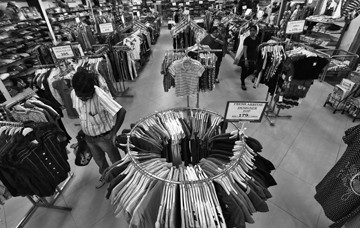That lightning-rod phrase that will make the best loss prevention professional cringe—racial profiling—has hit the news again as we enter the height of the holiday shopping season. In late October, NBA Milwaukee Bucks player John Henson was refused service at a Wisconsin jewelry store.
According to Henson’s Instagram account of the incident, employees of the Schwanke-Kasten Jewelers in Whitefish Bay, a suburb north of Milwaukee, Wisconsin, locked the store entrance as Henson and three friends approached the door. Employees called police, who arrived shortly thereafter and questioned Henson primarily about the Chevrolet vehicle he was driving as part of an endorsement package that had dealer plates. Apparently, the store had been robbed previously by assailants driving a car with dealer plates from the same dealership. However, even after police informed the store employees to open the door for Henson, an employee asked police to remain in the store while Henson looked at watches.“This was one of the most degrading and racially prejudiced things I’ve ever experienced in life and wouldn’t wish this on anyone,” Henson wrote on Instagram.
“Shopping while black” has become a buzz phrase for incidents where African-American customers are followed by security or otherwise treated disrespectfully in retail establishments. Oprah Winfrey, Condoleezza Rice, and even President Obama have reported this type of treatment. “There are very few African-American men in this country who haven’t had the experience of being followed in a department store. That includes me,” Obama told reporters following the 2012 shooting of Trayvon Martin.
Unfortunately, such incidents are often used with a broad brush to paint the entire retail industry of racial profiling, which just isn’t the case. Based on the magazine’s observation of both large and small retailers over the past fourteen years, it is safe to say that there’s not a single professional LP organization in this country that condones racial profiling. In fact, most internal training programs for store LP professionals specifically condemn the practice and teach behavior-based observations to identify potential shoplifters as do certification programs like those offered by the Loss Prevention Foundation.
According to Kevin McMenimen, COO for LPM Media Group’s custom publishing arm that specializes in creating internal awareness and training programs for retailers, “Most every LP organization that we support address racial profiling and other discrimination issues in their ongoing internal communications with their associates.” He added, “In my experience these incidents are not typically a failure of corporate policy, but a failure of individuals who do not follow the policy. It also points out the need for a strong internal communication program and good follow up by management.”
As McMenimen indicated, the best training cannot always stop an individual from violating policy. For example, a lawsuit filed this past June by four former security guards who worked at CVS stores in New York claim that their supervisors specifically told them to follow black and Hispanic shoppers. If that claim is true, here is a case of a few bad apples spoiling the bunch. CVS adamantly denied the claim in a statement that said in part, “We do not tolerate any policy or practice that discriminates against any group. We are shocked by the allegations in this complaint, and we intend to defend against them vigorously.”
There are also unattended consequences of using certain technology to report suspicious activity related to retail crime. As the magazine reported in October in the article “Poor Use of Technology Leads to Potential Racial Profiling in Retail Stores,” an app launched by the Georgetown (DC) Business Improvement District was intended to connect local businesses, police, and community members to report – and photograph – suspicious shoppers in an attempt to deter crime. One analysis of more than 3,000 messages posted via the app revealed that nearly 70 percent of those reported were black.
Having the proper corporate policy on discrimination and racial profiling is only the first step. Communicating it to all associates, documenting that associates acknowledge the communication, and following up periodically to ensure the policy is top of mind are equally as important. At the height of the year’s busiest shopping season, it behooves LP executives to reinforce corporate policy with all LP and store personnel regarding identifying and monitoring possible shoplifters so as not to have your brand be the next in the news accused of racial profiling.


